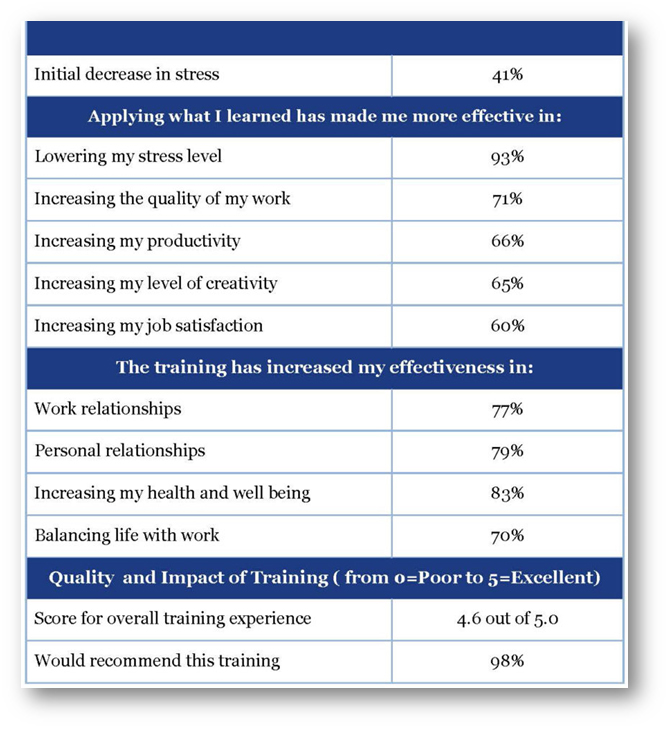THE RELATIONSHIP OF STRESS TO SUCCESS
“Companies that can teach their workforce how to manage stress better than their rivals will achieve a significant competitive advantage. This is what makes ProAttitude so compelling.” ~ Eric Severson, former Global Vice President of Human Resources at The GAP
ENGAGEMENT: THE #1 FACTOR IN SUCCESS
Companies that achieve high employee engagement outperform their competition across all business metrics. Those in the top half of employ engagement nearly double their odds of success compared with those in the bottom half (Gallup, 2016). Those at the 99th percentile have four times the success rate of those at the first percentile.
Business units that measure high in employee engagement generate 20% more in sales and are 21% more profitable than business units who measure low in engagement.
The Effect on Job Satisfaction and Retention: Employee satisfaction is directly linked to employee engagement (Bin Shmailan, 2016) and employee retention increases as employee engagement increases (Lado and Wilson, 1994).
WHY EMPLOYEES DISENGAGE
Only 24 percent of 568 managers surveyed by the Harvard Business Review considered most of their employees highly engaged HBR, 2016).
Why? It’s stress. Stress and disengagement are highly correlated. Nearly 60 percent of employees in high stress business units are disengaged (Willis Towers Watson, 2014). Business units with disengaged employees suffer 31 percent more turnover (Harter, 2006). For a business to succeed fully, it must sustain employee engagement, and to sustain employee engagement it must resolve the problem of stress.
THE SOLUTION TO THE PROBLEM
In the last ten years, neuroscience has identified a solution to stress to goes far beyond conventional stress management (HBR, 2012). The solution relates to our capacity to literally rewire our brain’s default from one that reacts stressfully to one that generates the calm, creativity and optimism that predicts success (Davidson, 2003).
The scientific term for this change is positive neuroplasticity and it is achieved through a fundamental shift in mindset that the Neuroscience of Success training facilitates. (Goewey, 2015)
THE RESULTS WE HAVE ACHIEVED
More than 15,000 participants

510-964-1398 ♥ don@proattitude.com
